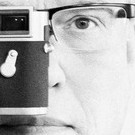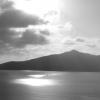Color profile for Leica M (M10, 262) with ColorChecker
-
Recently Browsing 0 members
- No registered users viewing this page.
-
Similar Content
-
- 5 replies
- 1,535 views
-
- 11 replies
- 891 views
-
- 1 reply
- 1,717 views
-
- 0 replies
- 3,382 views
-
- 3 replies
- 1,816 views
-





Recommended Posts
Join the conversation
You can post now and register later. If you have an account, sign in now to post with your account.
Note: Your post will require moderator approval before it will be visible.